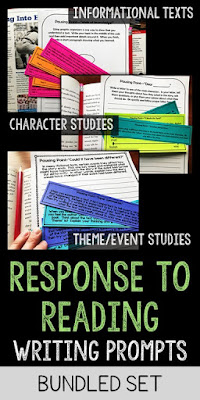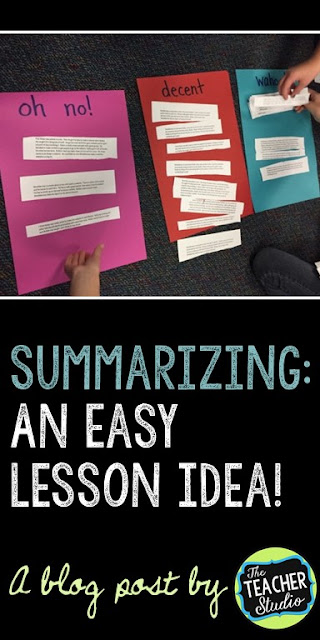If you teach “summarizing” in your classroom, you know that it is a REALLY tricky skill. Students often struggle to know what the most important details are…sometimes write down every single thing that happens…and usually miss that “heart of the story” piece. Because it is one of our assessed skills all year, I knew I wanted to do a better job modeling and scaffolding for my class this year.
To get started, we talked about summarizing, how it differs from retelling (which is oral and detailed), and how it not only has to capture the key elements of the story, but also that “theme” or big idea the author wants you to carry with you. That’s pretty complicated stuff!
I took some time and wrote 5 sample summaries for our most recent read aloud, Shredderman. I asked the students to work in pairs to read them, discuss them, and then decide if they were “oh no!”, “decent” or “wahoo!”. They had some great discussions…
…then we came back and each group placed their summaries where they felt they belonged. We had a LOT of variation! We read each one aloud and talked about the strengths and shortcomings of each (ex. One was well written and many students gave it a “wahoo!” until I pointed out that it was an OPINION piece, not a summary!), and I think it set us up well for tomorrow’s lesson where we are going to try to write our own summaries on some simplistic short texts. Stay tuned!
I just had my students type their summaries…but I LOVE using my “Pausing Points” to get students writing about text. I love that I can use them all year–with read alouds, picture books, book clubs, and even independent reading. We use standards-based grading, so I am always looking for ways to collect data to help me understand how deeply students are understanding what we read. Interested in seeing some of these? Just CLICK the image below.
Rather pin this for later? Here you go!









